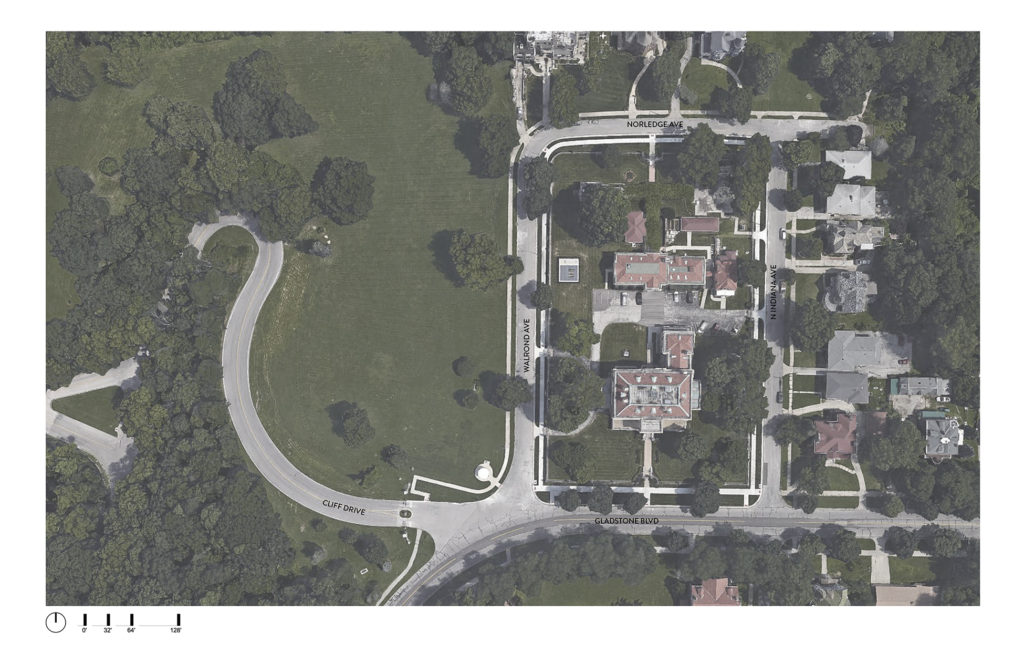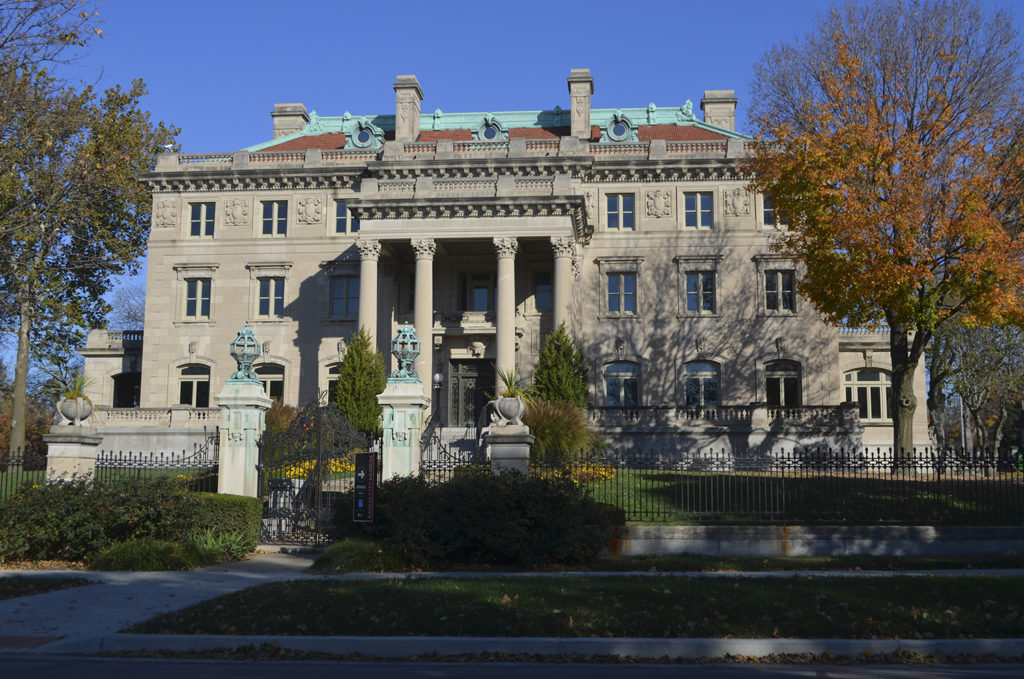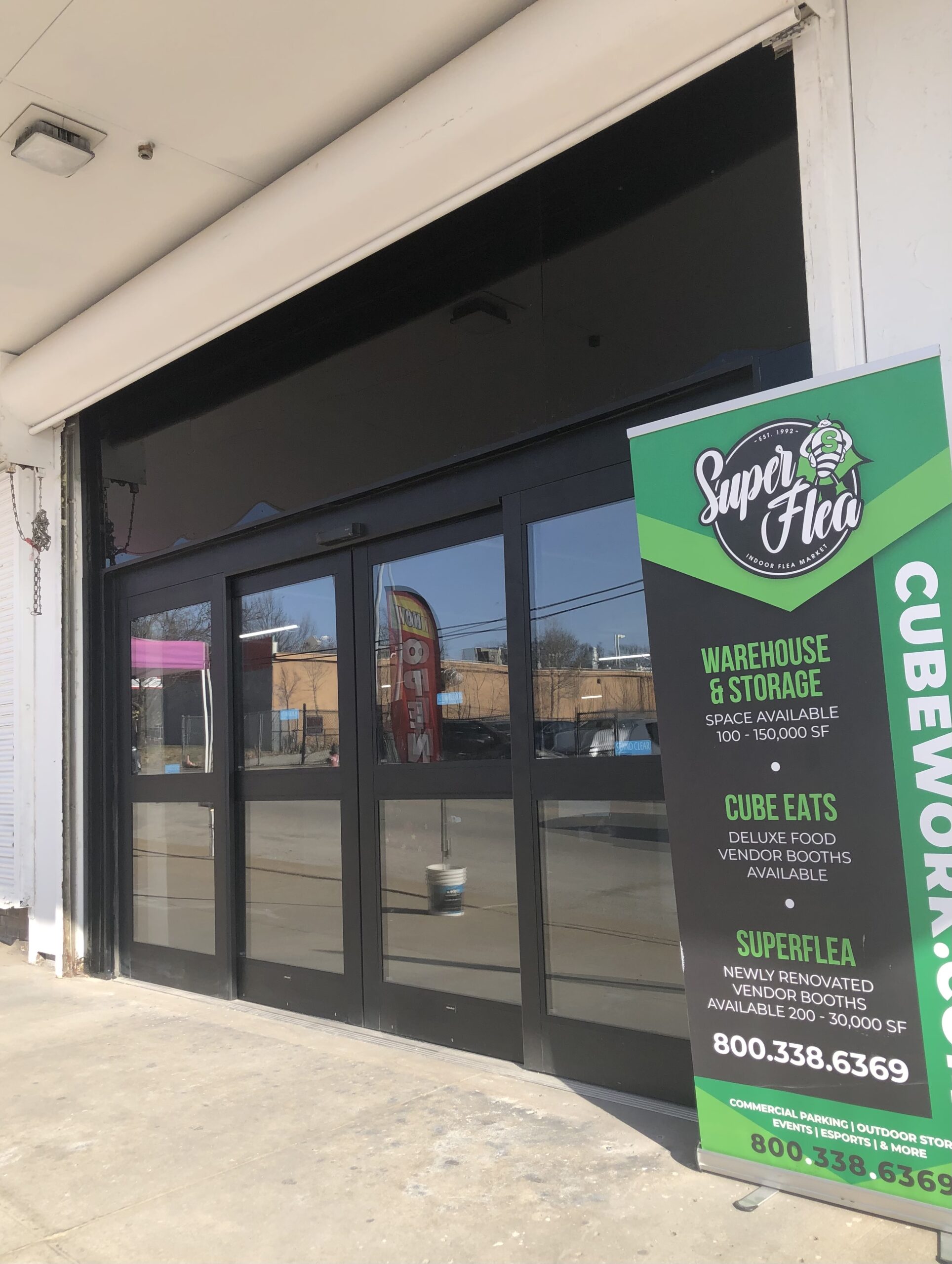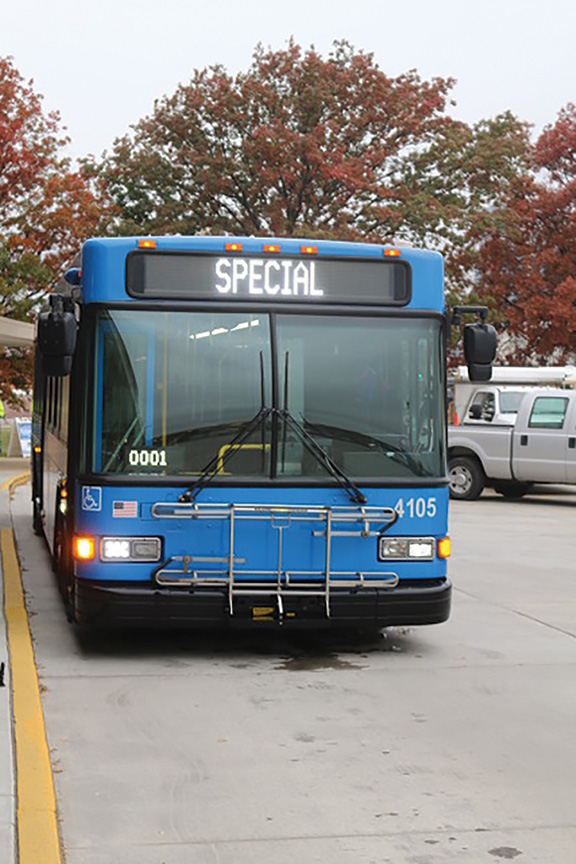Northeast News
June 23, 2017
KANSAS CITY, Missouri – The renovation and restoration of Corinthian Hall is coming, and the Kansas City Museum’s strategic team has estimated that 50,000 annual visitors will come along with it.
All of those visitors will need a place to park. The Museum is currently in the process of vetting potential parking solutions that could accommodate the anticipated bump in traffic. According to Executive Director Anna Marie Tutera, the Museum is currently in the ‘discovery’ phase of that process, which essentially means that the project team is reaching out to stakeholders to solicit thoughts and suggestions on the best way forward.
“We’re going to be approaching a parking solution just like we would approach any other solution on this property,” Tutera said. “We’re going to take this through a tried and true process.”
That process began with a meeting with the Scarritt Renaissance Neighborhood Association. During that meeting, the project team displayed a conceptual parking layout designed in the year 2000 that used parkland parallel to Walrond Avenue for a parking lot. To Tutera and the rest of the project leaders, the 17-year-old design seemed like a natural starting point for a fruitful discussion.
“Essentially, we started with a modified version of that layout, moving that lot closer to Walrond and Gladstone,” Tutera said. “The hope was that people would come up with other ideas and solutions that would inform the rest of the planning process.”
In some ways, the strategy worked. Tutera noted that she left that initial meeting with the Scarritt Renaissance neighborhood feeling good about the ideas that were brought forth.
“We had some people who thought, ‘Wow, this is great, because we really have no parking for Cliff Drive,'” Tutera recalled. “Others were concerned about using any portion of the parkland for the parking.”
That concern about utilizing existing parkland for a parking lot led to a flurry of suggestions and consternation in the subsequent days, leading some concerned community members to set off alarm bells about the parking project. Thomas Strenge is one Scarritt Renaissance resident who has voiced concerns about the prospect of altering parkland for the purposes of building a parking lot.
“Robert Long had the money to build anywhere, and he built at that site particularly for the landscape because it was the prettiest spot in Kansas City,” Strenge said.
Instead of building along the parkland to the west of Walrond Ave., Strenge has proposed shuttling in visitors from nearby E. Reservoir Dr., a closed loop with substantial street parking that connects to the south at Lexington Avenue. Strenge contends that the shuttle approach will serve a dual purpose: highlighting the amenities along Kessler Park while also discouraging nefarious activities at the reservoir.
“That area is already set up as a loop,” Strenge said. “There’s plenty of parking there that is right now only being used by prostitutes and the occasional disc golfer.”
When asked about Strenge’s proposed shuttling solution, Tutera said that the Museum will consider all ideas brought forth from the public.
“I don’t think that a shuttle idea is at all a bad one, or unreasonable. I think that Thomas and others need to express their ideas and thoughts as part of the process,” Tutera said. “Shuttles can be really great for special events. I think it’s important for us to look at all of the options.”
“I honestly cannot speak to the feasibility of any ideas right now, including the reservoir,” she added. “We haven’t done those studies yet.”
Though Strenge and others in the community have also expressed concern about an accelerated timeline for developing a parking solution, Tutera reached out to the community on the evening of Thursday, June 22 to clarify the parking timeline. In an email sent to more than a dozen community leaders, Tutera assured the community that Stage I of construction, set to begin on September 1, will not include parking.
“There is absolutely no urgency to finalize a parking plan for 2019 (when the Museum reopens) by September 1, 2017,” Tutera wrote. “What is critical is that we maintain an open dialogue and a transparent planning process, and that we continue to receive feedback and input about parking possibilities.”
Tutera further stated that contrary to some social media speculation, contractor JE Dunn would not be building a new gravel lot to park construction vehicles. Instead, JE Dunn will “use the Museum’s property and existing off-street parallel parking to park vehicles” during Stage I construction.
In a follow-up conversation, Tutera revealed that the architect’s construction drawings for the Phase I construction at Corinthian Hall – the work that is expected to kick off on September 1 – were expected to be completed on Friday, June 23. While architects have begun examining suggestions brought forth at the Scarritt Renaissance Neighborhood Association meeting and the subsequent Indian Mound Neighborhood Association meeting on Monday, June 19, Tutera suggested that the primary focus of the design team has been on meeting the June 23 deadline. The parking solution, she noted, is a project that’s further on the horizon.
“After the architects complete the priority task of getting the construction documents designed for Corinthian Hall, then they will have more time to look at parking options that have been brought forth,” Tutera said.
One potential solution that will be considered, Tutera said, is the possibility opening up parking on both sides of Walrond Avenue.
“It may require a widening of the street, and I think we need to look at that,” Tutera said.
The important thing to note, Tutera added, is that the project team is ready to hear more suggestions from the community on how to provide multi-modal access to the Kansas City Museum. That could include access for bicycles, buses, cars and shuttles.
More meetings will be held with Northeast neighborhoods over the coming month, and a wider public input session is tentatively scheduled for the end of July. All options remain on the table.
“Now is not the time to have all the answers,” Tutera said. “Now is the time to start asking really good questions.”





















